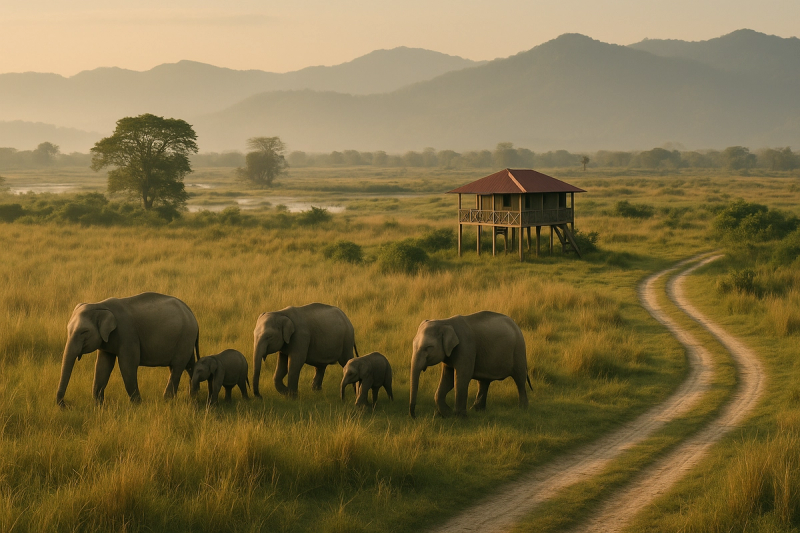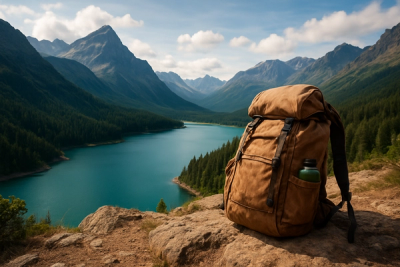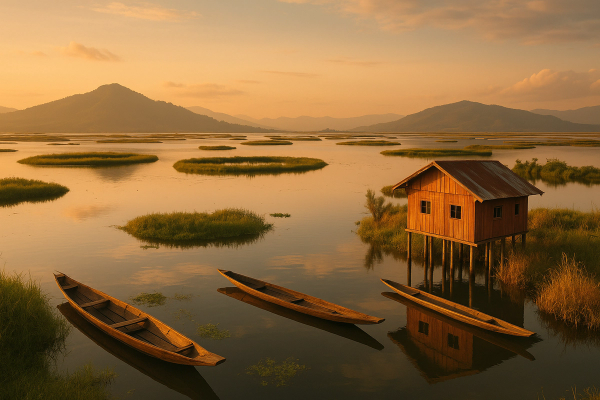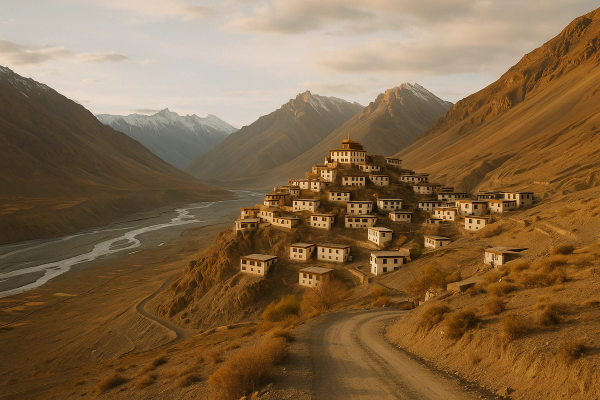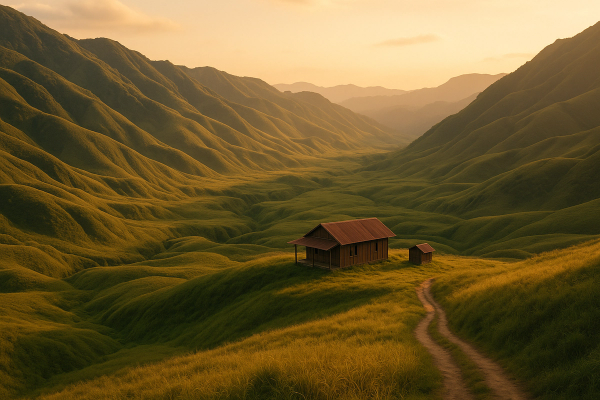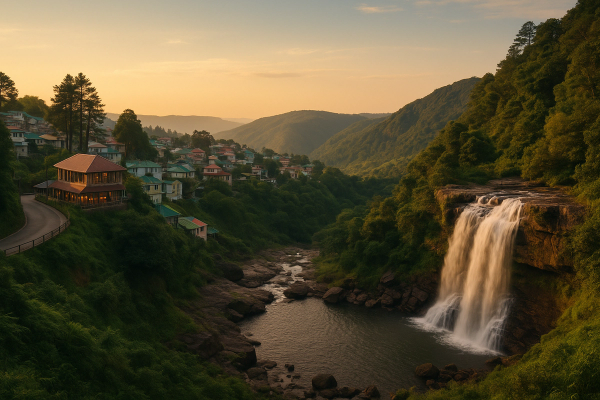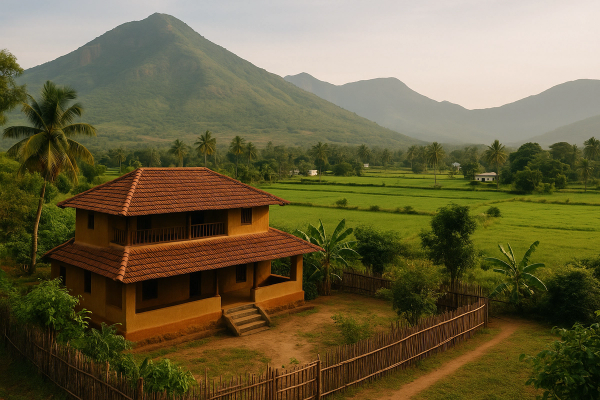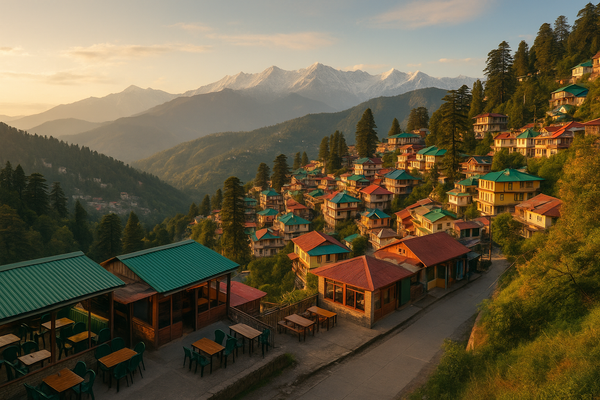Kaziranga National Park Guide: Safaris, Elephants & Budget Tips — from one Indian traveler to another#
So, um, I finally did Kaziranga. After hearing about those rhinos since school days and seeing those dramatic monsoon flood visuals on TV, I kept telling myself — arre yaar, go now, not someday. And when I reached, foggy dawn, dew on my hoodie, elephant grass waving like a sea… I actually went quiet for once. Kaziranga is raw and a little stubborn, like Assam itself. It doesn’t try to impress you, it just is. And then suddenly, a rhino shows up from the mist with that prehistoric horn and you’re like, bro this is not a zoo, this is a different world.¶
Getting there: the reality on the road#
Most folks base themselves at Kohora, the main gateway. I started from Guwahati and took a shared Sumo from Paltan Bazar because budget, also because I kinda love those old-school road trips where you’re squished between a tea planter uncle and a student going home. It’s around 4.5 to 6 hours depending on traffic and tea breaks. Cost for shared Sumo is usually 700–1,000 per person. Private taxi will set you back 5,500–8,000 one way, depends on the vehicle and your bargaining mood. Buses by ASTC also run, 500–800, comfy enough if you pick a decent operator. If you prefer flights, Tezpur airport is the nearest on paper but has limited schedules, so Guwahati is safer. Another hack: train till Furkating Junction, then grab a cab to Kohora in about 1.5 hours. Inside Kaziranga zone, moving between ranges happens by hired jeep, but near Kohora there are autos, e-rickshaws, and local cabs. Network is okayish for Jio and Airtel in town. Inside the park, forget it, which honestly is the point.¶
Best time to visit (and when not to)#
Peak season is November to February — cool weather, tons of migratory birds, but more fog in early mornings so keep an extra layer. March and April get warmer, but visibility improves because the Forest Department does controlled burning of tall grass, and animals come out more. May to October? Monsoon. The park mostly closes because of flooding and safety, and even if some peripheral stays are open, you won’t get safaris. Simple rule: if it’s pouring in Assam, don’t go. If you want that quiet vibe with still-decent sightings, aim late Feb to mid March. As of 2025, bookings are smoother and cashless, but the season window hasn’t changed. Floods still rule this landscape, and they decide everything.¶
Safari zones made simple#
Kaziranga is split into ranges, each with its own personality. Western or Bagori is classic rhino country with postcard wetlands and a high chance of close-ish sightings. Central or Kohora is the most popular, lots of mixed habitat, many jeeps, and the elephant safaris usually start here. Eastern or Agoratoli is for birders — think storks, kingfishers, raptors, the works — and fewer crowds. Burapahar is more forested and moody, good for those who like long, quiet drives and the possibility of slow-burn sightings. Timings are typically morning and afternoon slots for jeep safaris, and super-early dawn for elephant rides. Ranges open on a rotation sometimes, and slots can fill up fast on weekends and holidays, especially around Christmas–New Year and Bihu. Don’t bank on walking safaris — not allowed, this is big-animal land.¶
Elephant safaris: ride or skip?#
Okay, real talk. Elephant safaris are a thing here at dawn, and they do get you unnaturally close to rhinos. It’s surreal. But there’s a big ethics debate on riding captive elephants, and I felt that knot in my stomach too. I chose to do it once — after checking the condition of the elephants and how the mahouts treated them — and then stuck to jeeps for the rest. You do you, but be mindful. If you’re going for it, know this: limited seats, crazy demand, especially for Indian families on weekends. Tickets usually get managed by the range offices and official counters near Kohora and Bagori. Many hotels can queue or assist for a fee. Prices change, but plan roughly 1,200–1,800 per Indian adult, foreigners higher, plus park entry fees. Carry cash and UPI because sometimes the machine is moody. If you can’t get a seat, that’s okay. Jeep safaris are excellent here, seriously.¶
Jeep safari basics, costs, and booking hacks#
Jeep is the main game. A jeep fits 4–6 visitors, plus the driver and the compulsory guide. Rates vary by range and season, but budget around 2,500–4,000 for the jeep, then add per-person entry fees, guide fee, and camera charges if applicable. Overall a jeep for a group of four can land around 3,500–5,500 all in. Solo or couples can share jeeps if you ask your stay to club you with others. Booking? Official counters near each range issue permits for specific time slots and zones. Some ranges allow e-permits now and most counters accept UPI. But the vibe is still very “line up, wait, and smile.” Morning jeep slots start around 7 to 7:30 am depending on fog, afternoons 1:30 to 3 pm entry. Don’t be late — once the quota is done, it’s done. Carry a government ID, wear neutral colors, and do not argue with the guide about going off-track. It’s not a video game.¶
My safaris: the real feel, no filter#
First morning, Bagori. Chill cutting through my gloves, a pale sun. And then — that first rhino. Massive. Mud-streaked. A mynah literally hitchhiking on its back. We saw wild buffalo with those crescent horns, hog deer frozen mid-chew, and a fish eagle doing that slow, smug glide. The guide spotted fresh tiger pugmarks near the track and my heart just shot up. You almost never see tigers here even though the density is high, because the grass is tall and they’re ghosts. But just knowing a big cat walked where me and him went five minutes earlier… goosebumps. Next day we tried Agoratoli. I swear, the bird drama here is underrated. Storks clacking beaks, kingfishers like flying jewels, a pelican raft looking like a committee meeting. We idled watching a rhino mother with calf from a respectful distance. No loud talking, no standing up, just that quiet hum of the jeep and distant frog calls. It’s different from a Ranthambore chase or a Jim Corbett river mood. Kaziranga is water and grass and sky, all at once, and it gets under your skin.¶
Where to stay (budget to bougie, no judgement)#
Kohora has the widest stay options. Budget homestays start around 900–1,800 per night for a clean room, sometimes with simple breakfast. Mid-range resorts and lodges fall in the 3,000–7,000 bracket — solid picks include Wild Grass Lodge for old-school charm, Iora The Retreat for a full-service feel, and some neat boutique stays that keep popping up each season. Bagori side has a few quieter properties if you want fewer crowds. On the higher end, Borgos and Infinity Resorts go 8,000–15,000+ in peak times. ATDC tourist lodges like Aranya and Bonani are classic government options — decent value, but book early, and temper expectations on service speed. Tip: ask your stay straight up if they can help with permits, shared jeeps, and early breakfast. Also check for backup power and hot water timings, it’s a thing. During super-peak weeks, prices jump, so lock in early or go midweek.¶
Food & chai: what I ate, what you shouldn’t miss#
Assamese thalis here are love. A proper plate with bhaat, dal, seasonal greens, pitika, a light masor tenga if you eat fish, maybe a duck curry if you’re feeling like a treat. Maihang restaurant near Kohora is a reliable pick for local fare without drama. The food court at Kaziranga National Orchid and Biodiversity Park does earthy ethnic plates — pork with bamboo shoot, lai xaak, smoked stuff that smells like campfire happiness. Roadside dhabas on NH side serve robust rotis and alu curry for breakfast. Try pitha and jolpan when you find it, also a proper cup of strong Assam chai. Tea garden visits are doable around Bokakhat side or en route from Jorhat — some estates do tasting sessions if you call ahead. If you’re vegetarian, don’t worry, plenty of options. Oh and water — refill, don’t buy plastic bottles on loop. Carry your own. Please.¶
Offbeat add-ons + safety + packing in one place#
Between safaris, swing by the Kaziranga National Orchid & Biodiversity Park — not just orchids, it’s a mini crash course on Assam’s communities with evening cultural shows. Kakochang waterfall is a pretty detour near Bokakhat in winter when the flow is sane. Birders, ask around for Panbari Reserve Forest walks with a local naturalist. If you have extra days, do a Majuli loop via Jorhat — monasteries, mask-making, that river island calm. Safety-wise: do not stop on the highway for animal selfies, especially during flood months when wildlife crosses the road. Speeds are enforced for a reason. Inside the park, keep hands and head inside, no music, no feeding animals, no drones, and absolutely no plastic litter. Pack neutral clothes, a light fleece, cap, a rain layer just in case, binoculars, and a power bank. UPI works in Kohora, still carry some cash for backup. ATMs exist, but don’t assume they’ll be full. If you’re with kids, brief them on quiet time. It’s a forest, not a theme park.¶
Budget plan for 2N/3D (Indian traveler, average costs)#
- 1) Guwahati to Kaziranga shared Sumo: 800 x 2 ways = 1,600
2) Budget stay: 1,500 per night x 2 = 3,000 (mid-range would be 6,000–12,000)
3) Food and chai: 800–1,200 per day x 3 = ~3,000
4) Two jeep safaris sharing a vehicle: about 1,200–1,800 per person per safari = say 3,000 total
5) One elephant safari seat if you choose: ~1,500
6) Local transport and small entries: 800
Total budget-ish: ~12,900 without elephant ride, ~14,400 with it. Add 10–15% buffer for peak days or last-minute plans.
Money savers that actually work: travel midweek, share jeeps, book stays a month early, pick a homestay that throws in breakfast, and walk to dinner spots if they’re within a km. Avoid buying water repeatedly — refill. If you’re a group of 4–6 friends, hiring one full jeep works out cheaper than two random seats in different jeeps. And keep change handy for tea stalls — UPI sometimes sleeps.¶
Kaziranga doesn’t hustle you. It waits. And if you learn to wait back, it shows you things that stay with you way longer than any Instagram reel.
Anyway, that’s my honest take. Go for the rhinos, stay for the quiet, and let the grasslands reset your brain a bit. If you want more practical itineraries and local-ish tips like this, I keep reading and posting on AllBlogs.in — lots of India-focused travel stuff there that won’t burn your pocket or your patience.¶

